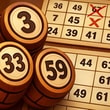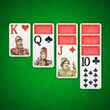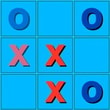🀄🌿 Lantern-calm, tile-sharp
The board arrives like a still pond at dawn: pale light, crisp reflections, and a stack of familiar signs waiting to be read. Just Mahjong is the pure distillation of mahjong solitaire—no noisy boosters, no side quests in disguise—just the ancient pleasure of finding a free match and feeling the whole structure exhale. You trace the contours with your eyes, note where the stacks are tallest, and test the edges like a locksmith testing tumblers. Somewhere in the arrangement, a first pair winks. You tap. Porcelain hush. Space appears where there was none, and your brain, uncoiling from the day, says yes.
👀🔓 What “free” really means—and why it’s thrilling
A tile is free when nothing presses down from above and at least one side breathes. That definition sounds small until you watch how it turns the board into a living thing. Remove a pair on the wing and an entire column loosens; peel a crown and inner corridors glow with sudden light. You’re not simply matching pictures—you’re untangling a knot with intent. Sometimes the obvious pair should wait, acting as a pressure valve while you dismantle a stubborn ridge elsewhere. Sometimes a single, brave match collapses three problems at once. The joy lands in slow, satisfying clicks, like a code revealing itself character by character.
🧭🏛️ Layouts with personalities, not just difficulty
Turtle stacks reward edge-first patience; shave the shoulders before you touch the crown and the endgame flows like water. Bridges dare you to free spans before pillars, or watch the center choke itself into silence. Spirals suggest a gentle orbit until you spot a diagonal that shortcuts the whole pattern in one clever breath. Even playful shapes hide intentions in their geometry: asymmetries that nudge your eye toward productive corners, mirrored towers that punish hasty, mirrored moves. After a few boards you’ll develop instincts—when to tunnel, when to peel, when to leave a tempting pair untouched because it guards your future options like a friendly gatekeeper.
🧘♀️🎧 Quiet on purpose
Everything in Just Mahjong is tuned for calm concentration. Colors are soft without losing contrast; symbols are crisp enough to read at a glance; animations breathe rather than brag. The soundscape is gentle: the tiny tap of selection, the porcelain clink of a pair vanishing, the hush that follows a good decision. There’s no metronome prodding you to rush. Time belongs to you, and the board respects that—particularly lovely when you want a ten-minute reset that might become forty because serenity turned into flow.
🔍🀘 Seeing like a pro, slowly and kindly
At first you spot doubles because they’re loud. Soon you scan in loops, suit by suit, noting lone characters marooned on opposite wings, counting how many bamboos remain in play, clocking where a dragon peeks from under a thin roof. You start to love three-of-a-kind dilemmas: which two vanish now so the third remains free later? Freeing isn’t always about immediacy; sometimes it’s about staging. Pull a pair that exposes two new sides, not one. Uncap a chamber with a single move, then hold your nerve while the temptation to “clean the shiny bit” fights with the smarter plan. This is attention training in the friendliest costume imaginable.
🎯🧮 Little tactics that feel like magic when they land
Save flexible sets—seasons and flowers—for tight moments; any season pairs with any season, and the same for flowers, so they’re wildcards you don’t want to spend casually. When two towers glare at each other across a narrow gap, remove the pair that opens the corridor, not the pair that tidies a corner. If your midgame stalls, sweep both long edges for single blockers; one stubborn tile often anchors half the mess. And if you find yourself bouncing between three almost-choices, pause. Let your eyes go soft. The useful pair tends to glow in your peripheral vision the moment you stop chasing it.
📱🖱️ Tactility without friction
On a phone, your thumb glides the board like a polite crane shot. Tap a tile and the highlight is honest; tap its twin and the removal feels physical. Pinch to inspect a dense crown, then return to the full tableau without losing the thread. On desktop, a mouse quietly turns you into a calligrapher: your cursor draws routes through symbols, double-clicks deliver that soft lid-on-jar feeling, and panning is smooth enough that your thoughts never jolt. The interface steps back; the puzzle steps forward.
🌙⏳ Your pace, your ritual
No timers, no scolding. Set tiny goals if you like—clear the wings before touching the core, finish without a hint, solve the spiral clockwise today and counterclockwise tomorrow—or simply follow the pleasure of a board becoming simpler under your hands. Breaks are allowed; the state waits politely. Some layouts beg for a single sitting; others feel like good company across an evening, a chapter here and there between sips and stretches. The satisfaction is cumulative: a chain of quiet yesses that add up to a clear table and a lighter pulse.
🧩🔁 Endless variety, familiar grammar
Hundreds of handcrafted patterns keep the surface fresh while the rules stay steady. You learn a grammar of free sides, capped columns, and pressure pairs, then rewrite it each session in a new accent. That blend—new canvases, stable tools—creates a loop that’s both comforting and renewing. You start the next layout not for loot or ladders, but to watch a little order bloom again, the way you’d watch a sunrise from a different window just because it’s there.
💡🙌 When help helps (and when it shouldn’t)
Hints exist like a friend gently clearing their throat: here’s a legal match if you’ve lost the thread. They don’t steal the steering wheel; they nudge your attention back into the grooves. Shuffles rescue rare deadlocks without feeling like a cheat code, preserving your progress while refreshing surface variety. Use them to keep momentum, or tuck them away as a personal challenge. The pleasure is yours to calibrate.
🧠🎒 A pocket of focus you can carry anywhere
Mahjong solitaire rewards the same mental muscles that make life smoother: pattern spotting, patient sequencing, the courage to leave a short-term win in favor of a better long game. Ten minutes of that, framed by warm art and gentle sound, feels less like “playing a game” and more like tidying a desk inside your head. The afterglow is real: you close the last pair and notice your breathing has slowed, your shoulders have dropped, and the rest of your day has fewer sharp corners.
🌤️✨ Why this version sings
Because it commits. Classic rules, clean readability, layouts that respect your time and intelligence—Just Mahjong trusts the core loop to carry you. It’s a quiet confidence you can feel in the first match and still feel on the hundredth layout. No garnish required. The tiles are the story, the board is the stage, and you get to be both audience and author at once.
🏁🀄 The moment it clicks
You’re stuck, or so it seems. The crown won’t budge, the center sulks, and the edges look picked clean. Then you notice a single bamboo tucked under a thin roof on the right wing, paired with its twin left and low. You lift them, and a seam opens like fabric parting. Two characters free themselves; a circle pair follows; the cap on the core slides away as if it had been waiting for permission. In half a dozen moves, the whole tableau relaxes. You didn’t brute-force it—you listened until the layout told you where to touch. The final pair fades with a soft clink. The table breathes. So do you.
 Winter Wonderla
Winter Wonderla












































